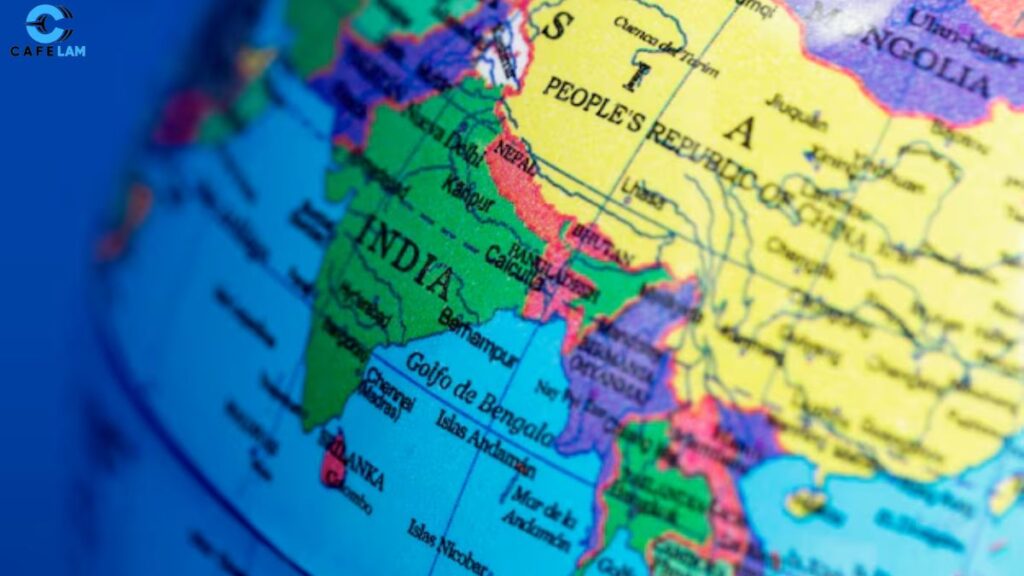Sri Lanka, the pearl-shaped island nation in the Indian Ocean, belongs to the continent of Asia. This tropical paradise sits just southeast of India, making it part of the Asian landmass despite being surrounded by water. Understanding Sri Lanka’s continental classification helps travelers and geography enthusiasts appreciate its unique position in global geography.
Many people wonder about Sri Lanka’s continental identity because of its island status. While islands can sometimes create confusion about continental boundaries, Sri Lanka’s geographic location, cultural connections, and geological foundations firmly establish it as part of Asia. This comprehensive guide explores everything you need to know about Sri Lanka’s continental placement and geographic significance.
Understanding Continental Classifications
Continental classifications follow specific geographic and geological principles that help organize our world’s landmasses. Geographers use several factors to determine which continent an area belongs to, including tectonic plate boundaries, cultural connections, and historical associations.
Sri Lanka’s classification as part of Asia stems from its position on the Indo-Australian tectonic plate. The island sits on the same continental shelf as the Indian subcontinent, making it geologically connected to the Asian mainland. This underwater connection explains why Sri Lanka is considered part of Asia rather than a separate entity.
The concept of continents isn’t always straightforward, especially for island nations. However, most geographic authorities agree that proximity to mainland areas, cultural similarities, and geological foundations determine continental membership.
Sri Lanka’s Geographic Position in Asia
Sri Lanka occupies a strategic position in South Asia, located approximately 31 kilometers southeast of India’s southern tip. The narrow Palk Strait separates the island from the Indian mainland, creating a natural boundary that has influenced the region’s history and culture.
The island’s coordinates place it between 5°55′ and 9°51′ North latitude and 79°41′ and 81°53′ East longitude. This positioning firmly places Sri Lanka within the Asian continent’s boundaries, specifically in the South Asian subregion alongside countries like India, Pakistan, Bangladesh, and the Maldives.
Sri Lanka’s location in the Indian Ocean doesn’t diminish its Asian identity. Many Asian countries include island territories, and geographic proximity to the mainland typically determines continental classification.
Physical Geography and Continental Connection
Sri Lanka’s physical connection to Asia becomes evident when examining the ocean floor between the island and India. The shallow waters of the Palk Strait reveal an underwater land bridge that once connected Sri Lanka directly to the Indian mainland.
During ice ages, when sea levels were significantly lower, this land bridge was exposed, allowing early human migrations and wildlife movement between Sri Lanka and India. This historical connection strengthens the argument for Sri Lanka’s inclusion in the Asian continent.
The island’s geological composition mirrors that of the Indian peninsula, featuring similar rock formations and mineral deposits. These geological similarities provide further evidence of Sri Lanka’s continental Asian identity.
| Geographic Feature | Details |
| Distance from India | 31 kilometers southeast |
| Separating Water Body | Palk Strait |
| Ocean Location | Indian Ocean |
| Tectonic Plate | Indo-Australian Plate |
| Continental Shelf | Asian Continental Shelf |
Cultural and Historical Ties to Asia
Sri Lanka’s cultural connections to Asia, particularly South Asia, reinforce its continental classification. The island shares deep historical, linguistic, and religious ties with neighboring Asian countries, especially India.
Buddhism and Hinduism, two major Asian religions, have shaped Sri Lankan society for over two millennia. These spiritual traditions traveled from mainland Asia to the island, creating lasting cultural bonds that persist today. The influence of Indian civilization on Sri Lankan art, architecture, and social structures demonstrates the strong continental connections.
Language families also support Sri Lanka’s Asian classification. Sinhala and Tamil, the island’s primary languages, belong to Indo-European and Dravidian language families respectively, both of which originated on the Asian mainland.
Political and Administrative Considerations
International organizations and political bodies consistently classify Sri Lanka as an Asian nation. The country is a member of several Asian regional organizations, including the South Asian Association for Regional Cooperation (SAARC) and various Asian economic partnerships.
United Nations regional groupings place Sri Lanka in the Asian region, specifically within South Asia. This official classification influences international relations, trade agreements, and diplomatic ties throughout the Asian continent.
Sri Lanka’s participation in Asian Games, Asian political forums, and regional economic initiatives demonstrates its recognized status as an Asian nation. These institutional memberships reflect the global consensus regarding the island’s continental identity.
Neighboring Countries and Regional Context
Sri Lanka’s immediate neighbors are all Asian countries, with India being the closest at just 31 kilometers away. The Maldives, another island nation, lies southwest of Sri Lanka and is also classified as part of Asia.
The island’s position in the Indian Ocean places it along major Asian shipping routes that have connected Asian civilizations for centuries. These maritime connections have facilitated trade, cultural exchange, and migration patterns that link Sri Lanka firmly to the Asian continent.
Regional weather patterns, including monsoons that affect much of South Asia, also influence Sri Lanka’s climate. These shared meteorological phenomena create additional connections between the island and mainland Asia.
Time Zones and Geographic Standards
Sri Lanka follows Sri Lanka Standard Time (SLST), which is UTC+5:30, aligning it with Indian Standard Time. This time zone selection reflects the island’s Asian orientation and practical connections to the South Asian region.
International mapping standards and geographic coordinates consistently place Sri Lanka within Asian boundaries. Major atlases, geographic databases, and mapping services universally classify the island as part of the Asian continent.
Aviation and shipping routes connecting Sri Lanka typically focus on Asian destinations, with Colombo serving as a hub for South Asian and broader Asian connectivity. These transportation patterns reinforce the island’s position within the Asian continental system.
Biodiversity and Ecological Connections
Sri Lanka’s biodiversity shows strong connections to Asian flora and fauna, particularly species found in the Indian subcontinent. Many plant and animal species migrated to the island via the historical land bridge, creating ecological similarities with mainland Asia.
The island’s position along Asian migration routes makes it an important stopover for birds and marine life moving throughout the region. These natural migration patterns demonstrate Sri Lanka’s integration into Asian ecological systems.
Endemic species in Sri Lanka often show evolutionary relationships to Asian mainland species, providing biological evidence of the island’s continental connections. These evolutionary links support the geographic classification of Sri Lanka as part of Asia.
Modern Economic and Trade Relationships
Sri Lanka’s economy is deeply integrated with Asian markets, particularly through trade relationships with India, China, and other South Asian neighbors. The island’s strategic location makes it a valuable partner in Asian economic development.
Major infrastructure projects connecting Sri Lanka to Asian mainland countries include proposed bridges and tunnel systems across the Palk Strait. These initiatives would strengthen the physical connections between the island and the Asian continent.
Regional trade agreements and economic partnerships consistently include Sri Lanka in Asian economic zones. These commercial relationships reflect the practical reality of the island’s position within the Asian continental system.
Tourism and Cultural Exchange
Tourism patterns to Sri Lanka primarily originate from Asian countries, with India, China, and other regional nations providing the majority of visitors. This tourism flow demonstrates the cultural and geographic connections between Sri Lanka and the Asian continent.
Cultural festivals and traditions in Sri Lanka often mirror those found throughout South Asia, creating shared experiences that transcend national boundaries. These cultural connections strengthen the argument for Sri Lanka’s Asian continental identity.
Educational exchanges and scholarly cooperation between Sri Lanka and Asian universities create ongoing intellectual connections that reinforce the island’s position within the Asian academic community.
Conclusion
Sri Lanka’s classification as part of the Asian continent is supported by overwhelming geographic, cultural, historical, and political evidence. The island’s position on the Asian continental shelf, its cultural connections to South Asian civilizations, and its integration into Asian regional organizations all confirm its continental identity.
Understanding Sri Lanka’s place in Asia helps appreciate the island’s role in regional history, culture, and modern development. Whether you’re planning a visit, studying geography, or simply curious about world geography, recognizing Sri Lanka as an Asian nation provides important context for understanding this fascinating island nation.
The next time someone asks about Sri Lanka’s continental location, you can confidently explain that this beautiful island nation is indeed part of Asia, connected to the continent through geology, culture, and centuries of shared history.
READ MORE: Beliktal: Discovering a Hidden Gem of Culture & Nature
Frequently Asked Questions
Q: Is Sri Lanka considered part of Southeast Asia or South Asia?
A: Sri Lanka is classified as part of South Asia, not Southeast Asia, due to its proximity to India and cultural connections to the Indian subcontinent.
Q: Was Sri Lanka ever physically connected to mainland Asia?
A: Yes, during ice ages when sea levels were lower, a land bridge connected Sri Lanka to India, allowing migration of people and wildlife.
Q: Which Asian countries are closest to Sri Lanka?
A: India is the closest Asian country at 31 kilometers away, followed by the Maldives to the southwest in the Indian Ocean.
Q: Does Sri Lanka use the same time zone as other Asian countries?
A: Sri Lanka uses Sri Lanka Standard Time (UTC+5:30), which is the same as Indian Standard Time, reflecting its South Asian connections.
Q: Are there any proposals to physically reconnect Sri Lanka to mainland Asia?
A: Yes, there have been various proposals for bridges or tunnels across the Palk Strait to connect Sri Lanka directly to India.







